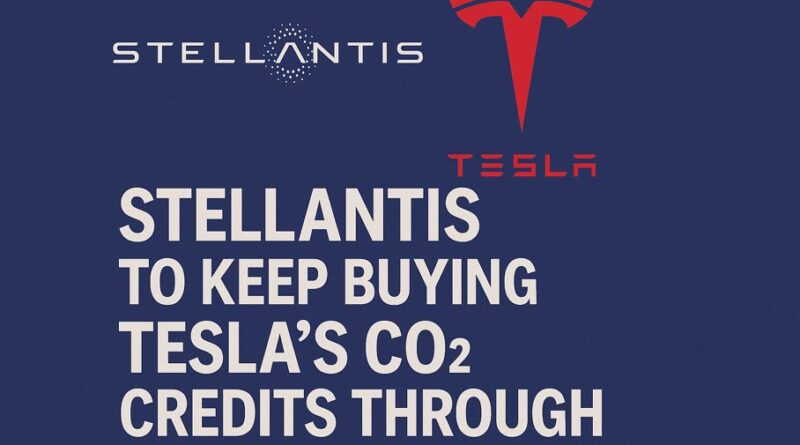Stellantis to Keep Buying Tesla’s CO2 Credits Through 2025
Stellantis, the multinational auto giant behind popular brands like Fiat, Jeep, and Peugeot, plans to continue buying CO2 emission credits from Tesla in 2025. The announcement highlights ongoing challenges automakers face meeting Europe’s tough emissions standards and reveals Tesla’s continued importance in helping rivals avoid penalties.
Why is Stellantis Buying Tesla’s CO2 Credits?
Under EU regulations, car companies must meet strict emissions targets, limiting the average CO2 emissions of the vehicles they sell. If they miss those targets, they face steep fines. To avoid such penalties, companies like Stellantis can buy credits from manufacturers like Tesla, which produces zero-emission electric vehicles.
Tesla has historically earned significant revenue from selling these credits, generating around $10 billion from other automakers since 2019. This practice has become a critical revenue stream for Tesla, helping boost its profitability.
Stellantis’ Ongoing Challenges
Despite pushing forward with electrification, Stellantis still trails behind the EU’s targets. Currently, electric vehicles (EVs) account for about 14% of Stellantis’ total European sales—short of the 21% goal set by the EU. As a result, the company sees buying credits from Tesla as a necessary short-term solution while it ramps up its own electric and hybrid vehicle production.
Jean-Philippe Imparato, Stellantis’ head of European operations, stated clearly that the company must take advantage of every available option to meet regulatory demands, including buying credits from Tesla’s emissions “pool.”
EU Offers Extended Timeline
Recently, the European Commission provided some flexibility, extending the compliance window from a single-year target in 2025 to an average calculated over the 2025–2027 period. While this gives automakers like Stellantis more breathing room, the company still plans to use Tesla’s credits to avoid immediate penalties.
Stellantis acknowledges that credit-buying isn’t a permanent fix but serves as a bridge while they expand their electrification efforts.
Stellantis’ Future Electric Plans
Looking ahead, Stellantis is actively stepping up its electric vehicle production. One major initiative includes launching a hybrid version of the Fiat 500 at its Mirafiori plant in Turin by late 2025. The company aims to produce about 130,000 units annually, split between fully electric and hybrid models. This move signals Stellantis’ longer-term commitment to complying independently with emissions standards.
Tesla’s Role as an Emissions Credit Provider
Tesla continues to play a crucial role as an emissions credit supplier in the auto industry. Its profitable credit-selling arrangement helps offset competitors’ excess emissions, further cementing Tesla’s unique market position. While this practice generates considerable revenue for Tesla, analysts expect its significance might gradually decrease as other automakers catch up in electrification.
Conclusion
Stellantis’ decision to buy CO2 credits from Tesla through 2025 underscores the ongoing difficulties automakers face in meeting EU emissions targets. While Tesla benefits financially, Stellantis uses this arrangement as a temporary strategy until its electric and hybrid vehicle production ramps up sufficiently.
As emissions regulations continue to tighten, expect to see automakers like Stellantis increasingly accelerate their own EV strategies to remain competitive and compliant.
Buying a used VW. Buying used vauxhall, BMW, Jaguar, Ford, Volvo, Range rover, Bentley, Aston Martin, Porsche, Ferrari, Lamborghini, Maserati, Hyundai, Tesla, Honda, Pagani

